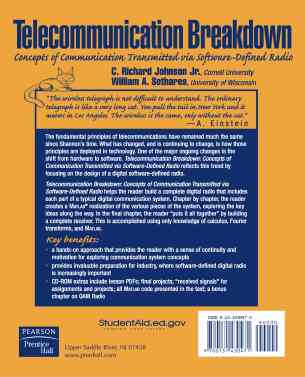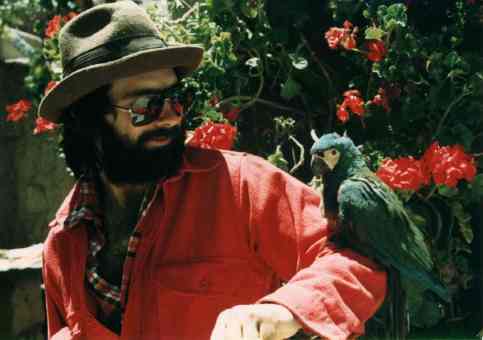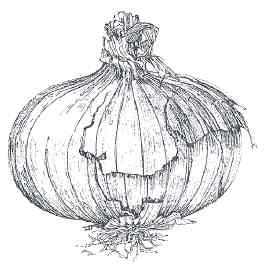|
|
|
 |
|
|
|
 |
| by C. R. Johnson, Jr. | and | W. A. Sethares |
|
|
 |
The fundamental principles of telecommunications have remained much the same since Shannon's time. What has changed, and is continuing to change, is how those principles are deployed in technology. One of the major ongoing changes is the shift from hardware to software -- and Telecommunication Breakdown reflects this trend by focusing on the design of a digital software-defined radio.
| Telecommunication Breakdown helps the reader build a complete digital radio that includes each part of a typical digital communication system. Chapter by chapter, the reader creates a Matlab realization of the various pieces of the system, exploring the key ideas along the way. In the final chapter, the reader "puts it all together'' to build a fully functional receiver, though it is not intended to operate in real time. Telecommunication Breakdown explores telecommunication systems from a very particular point of view: the construction of a workable receiver. This viewpoint provides a sense of continuity to the study of communication systems. |
|
Here's why we think this is the best way to learn about Telecommunications systems:
| Telecommunication Breakdown is the only complete software radio design text available -- learn communcation systems by building a receiver. | |
| All parts of the system are covered -- including coding, synchronization, and equalization -- parts that are usually left off of early courses. See the whole picture. | |
|
|
Analysis is kept to a minimum -- focus on learning through experiment. Telecommunication Breakdown is not an incomprehensible mass of formulas with no relevance. Explore each piece in a hands-on manner. |
|
|
Prerequisites differ from most standard texts -- deemphasizes stochastic processes and so can be used earlier in the curriculum. |
| You've heard of Signal Processing First (by McClellan, Schafer and Yoder)? Telecommunication Breakdown is like "Digital Communications Second." (If we were more clever, we might have called it "DC Second.") | |
| All of those mysterious parts of the system (like Phase Locked Loops, Costas Loops, Energy Maximization Timing recovery, Decision-Directed and Least Squares equalization) are all handled in one unified way -- through the application of gradient optimization. After reading Telecommunication Breakdown you'll find they are no longer quite so mysterious. |
But don't take our word for it... here are some things other people are saying:
| Telecommunication Breakdown is structured like an onion -- in layers. The first chapter presents a sketch of a digital radio; the first layer of the onion. The second chapter peels back the onion to reveal another layer that fills in details and demystifies various pieces of the design. Successive chapters then revisit the same ideas, each layer adding depth and precision. The first functional (though idealized) receiver appears in Chapter 9. Then the idealizing assumptions are stripped away one at a time throughout the remaining chapters, culminating in a sophisticated software-defined radio design in the final chapter. These layers are: |  |
Here's a fairly detailed version of the table of contents. If you are an instructor considering adopting Telecommunication Breakdown for a class, you might be interested in our "to the instructor" rap.
|
Do you get all queasy inside when thinking about the Fourier Transform? Now you can sing your troubles away with the Fourier Transform song
|
Plus, Telecommunication Breakdown comes with a pumpkin-orange CD-ROM that contains all the Matlab programs, a complete set of lecture slides, and two, count 'em, two complete full length engineering texts in .pdf form. Did we mention the video of a real-time and real-life equalizer? And some HUGE songs, too... |
| Click here to download an somewhat revised version of Telecommunication Breakdown called Software Receiver Design.. | Click here to go to Amazon.com. |
For those who have already got their copy, here are a few errata that crept into the first edition. We promise to fix these as soon as we can.
![]()
To get to my homepage, click here.